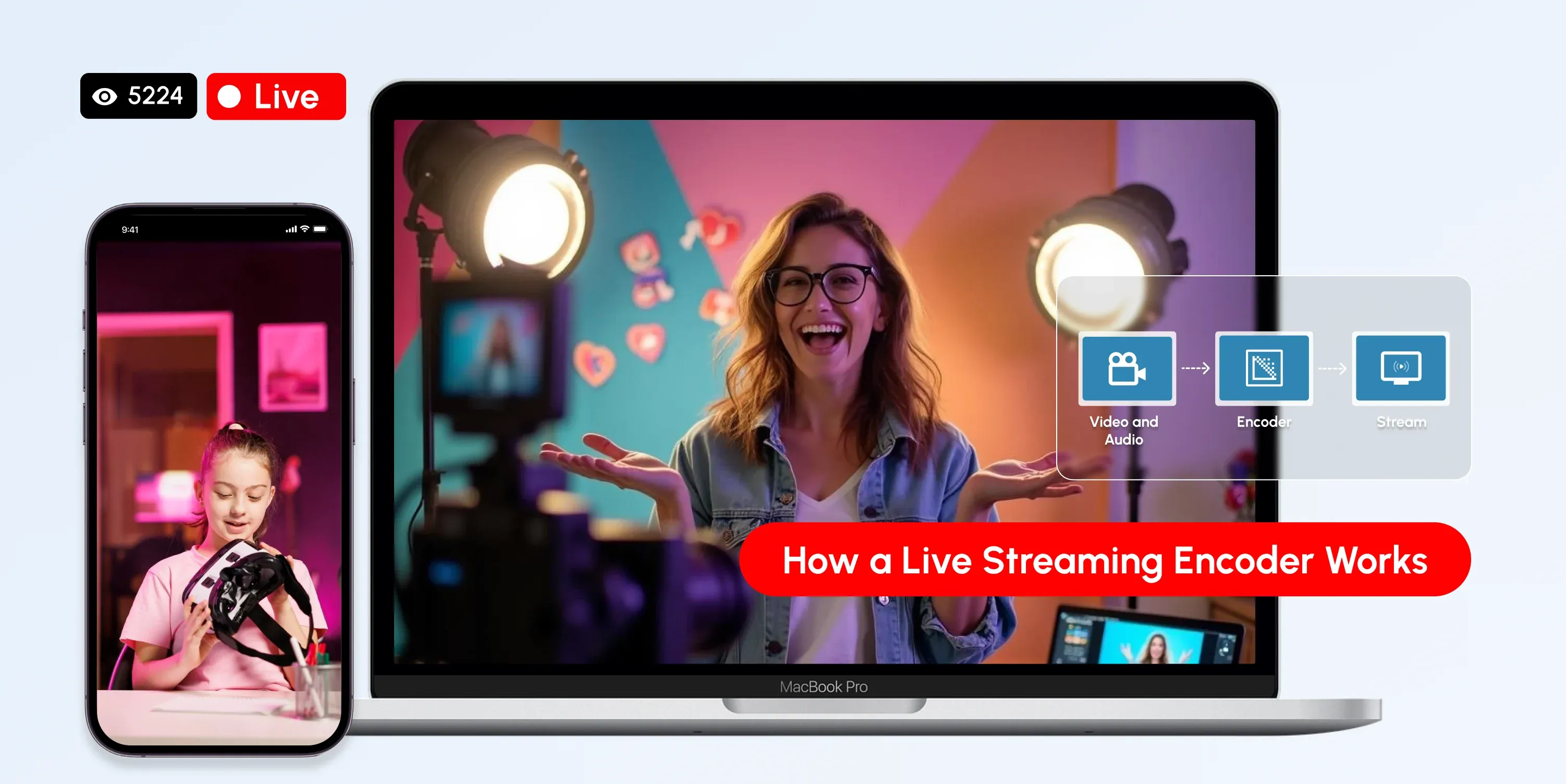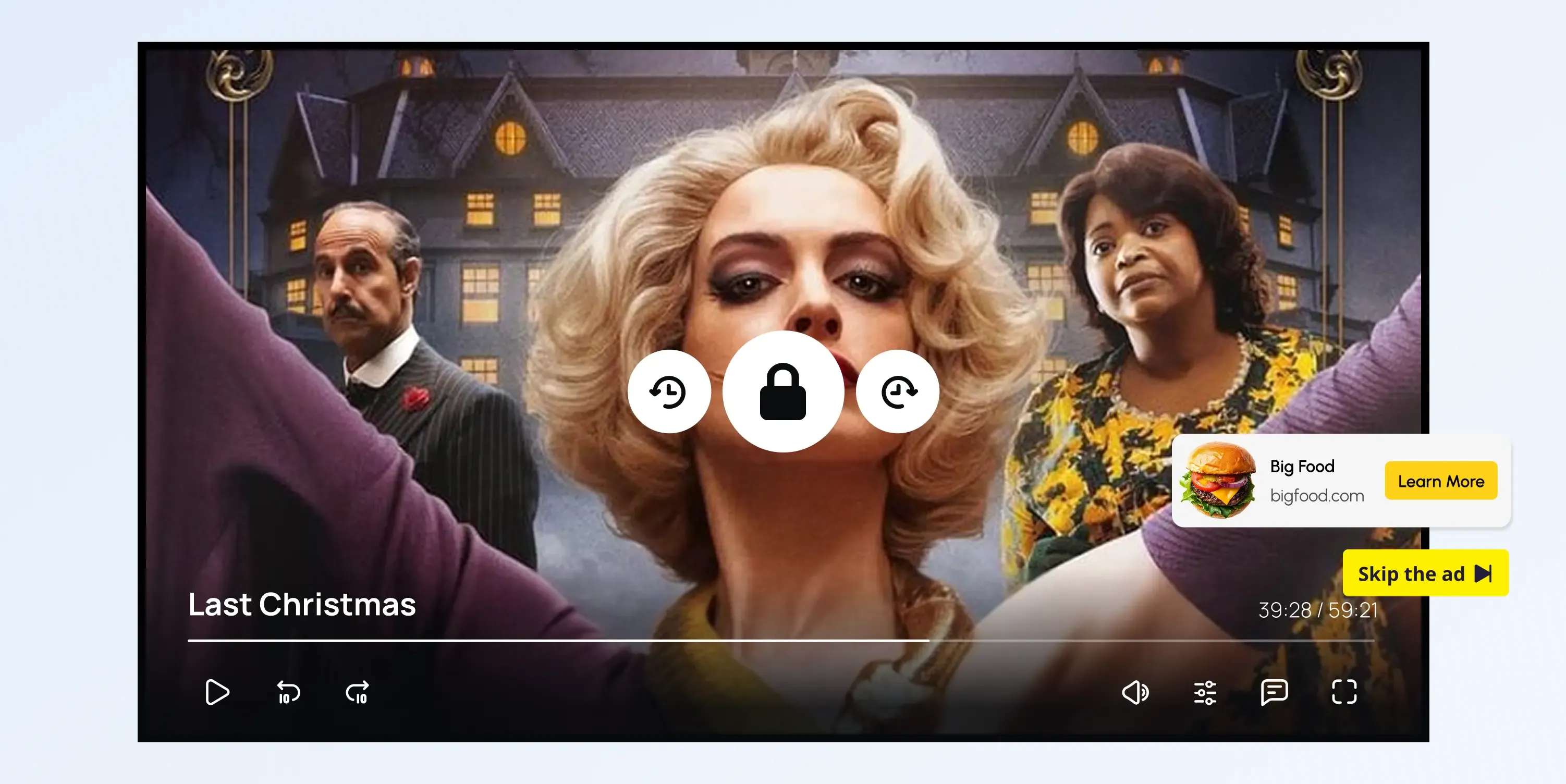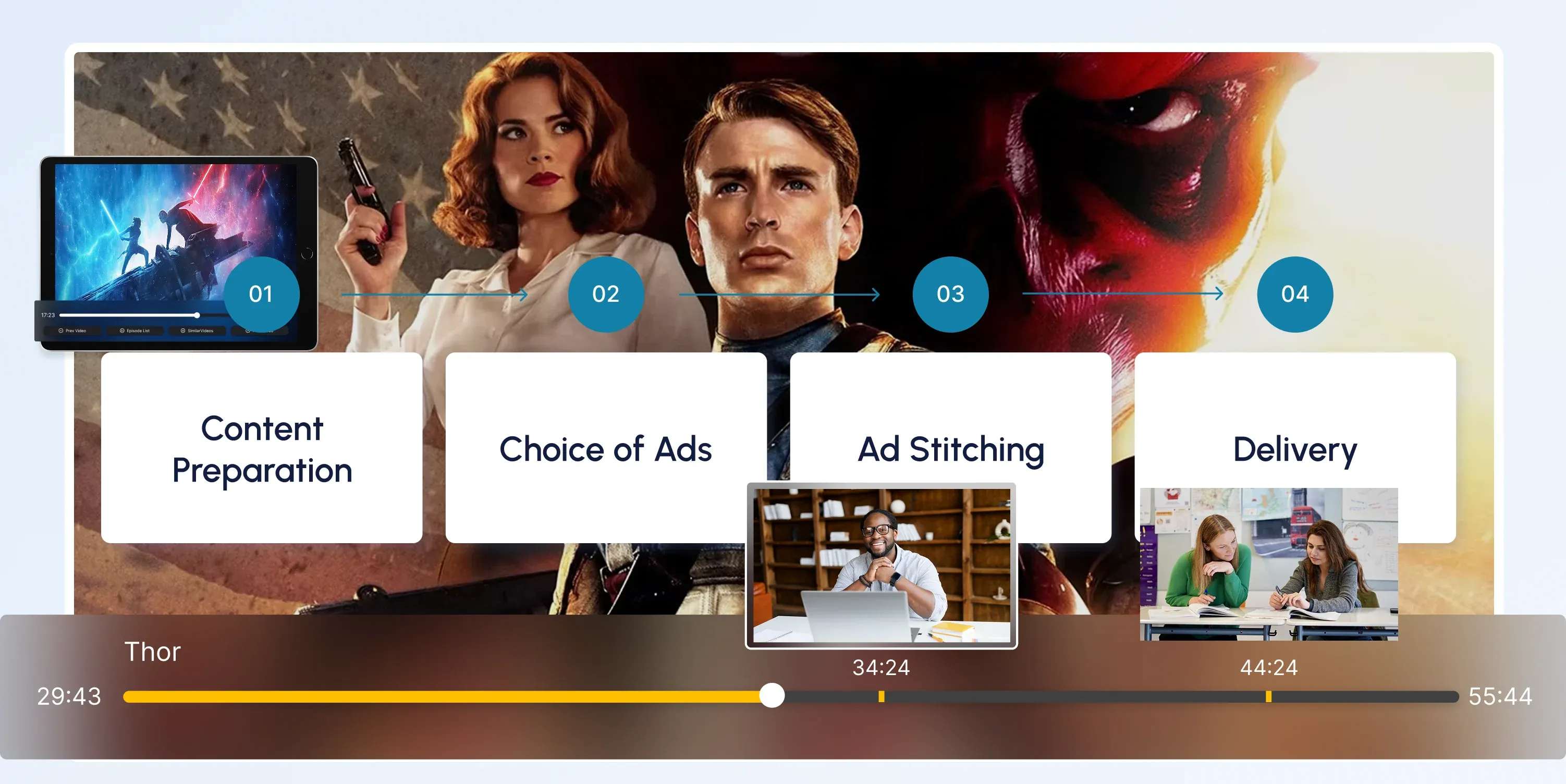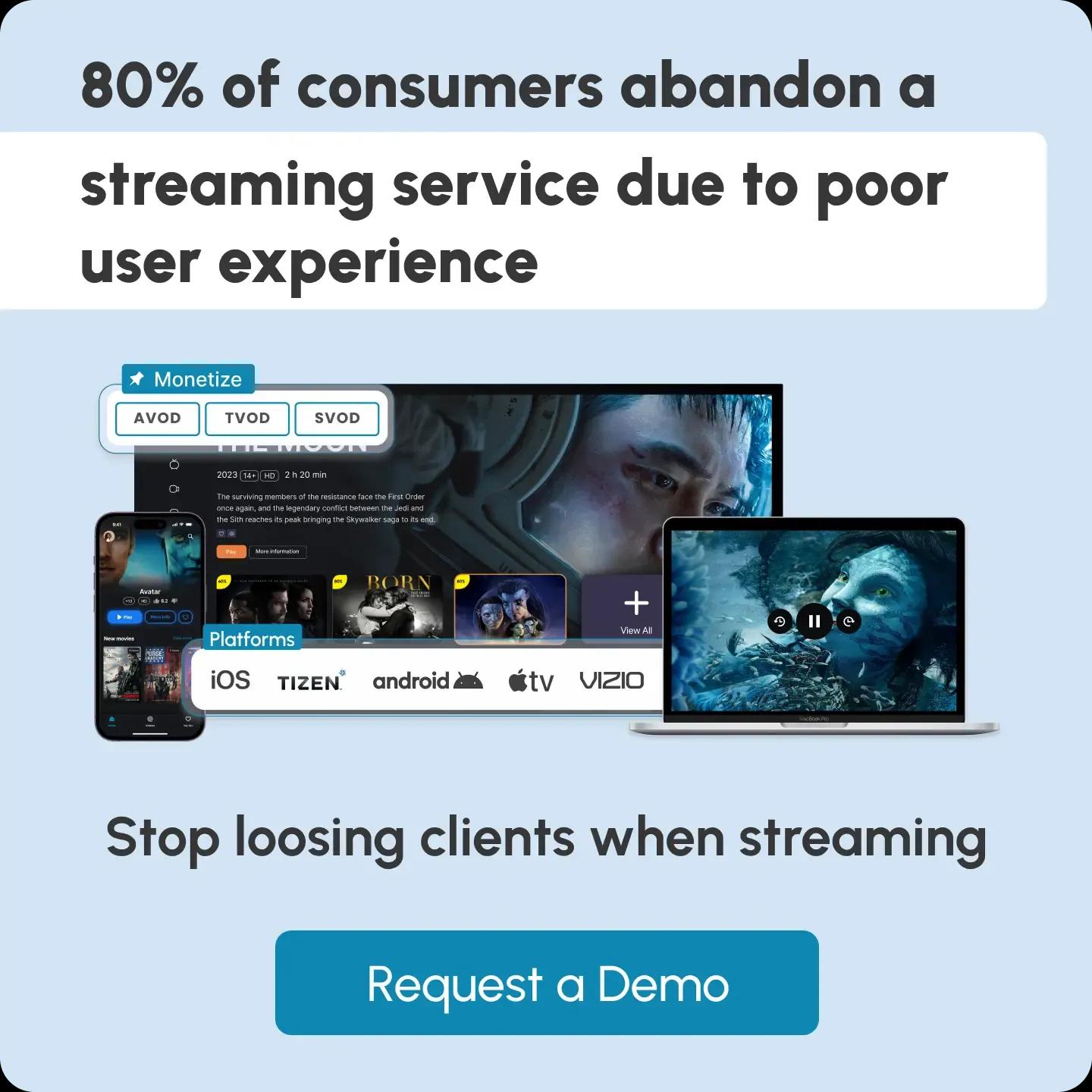Glossary term
Live Streaming

What Is Live streaming?
Live streaming is the real-time transmission of audio and video content over the internet to an audience. It allows viewers to watch events as they happen, without delays or pre-recording, using streaming protocols like HLS or RTMP.
Overview
Live streaming covers a wide range of uses, including social media events, gaming (especially on platforms like Twitch), professional sports, news, concerts, webinars, and live commerce. Viewers often interact with broadcasters via real-time chat or reactions.
Live streaming is powered by adaptive streaming protocols like HTTP Live Streaming (HLS) and MPEG‑DASH, which segment content into small chunks and adjust video quality dynamically based on network conditions. These technologies, collectively, deliver accessible and adaptable live streams to users.
How Does Live Streaming Work?
Live streaming works by capturing, encoding, transmitting, and delivering audio and video content in real time over the internet. Let’s break everything down into five main steps:
Step 1. Capture: A camera and microphone record the video and audio of the live event (e.g., a phone, webcam, or professional camera).
Step 2. Encoding: The raw footage is converted into a digital format using an encoder (software like OBS or hardware). This compresses the data to make it suitable for online transmission.
Step 3. Uploading: The encoded stream is sent from the broadcaster's device to a streaming server or platform (e.g., YouTube Live, Twitch, Facebook Live) using protocols like RTMP (Real-Time Messaging Protocol).
Step 4. Content Delivery: The streaming server uses adaptive bitrate streaming protocols like HLS (HTTP Live Streaming) or MPEG-DASH to break the video into small segments and deliver them through a Content Delivery Network (CDN).
Step 5. Playback: Viewers access the live stream through a player on their device (browser, mobile app, or smart TV), which receives and plays segments continuously, creating a smooth, real-time viewing experience.
Technologies Behind Live Streaming
Here are the main technological layers and stages that support live streaming from A-Z.
1. Capture Layer
Devices Used:
- Cameras (e.g., DSLRs, PTZ, webcams) and microphones capture raw video and audio signals.
- Professional-grade setups include HDMI/SDI video sources, multiple camera angles, and dedicated audio mixers.
Next, the signal formats define how raw audio/video signals are represented before encoding and how they move between devices (like cameras, switchers, and encoders).
A signal format refers to the structure and encoding of audio or video data as it is captured, transmitted, processed, or displayed by a device.
Signal Format: The output is typically uncompressed or lightly compressed video or audio (e.g., YUV, PCM), needing real-time encoding before transmission.
2. Encoding Layer
Encoding converts high-bitrate, raw video or audio into compressed, streamable formats using codecs.
Key Technologies:
- Video Codecs: H.264/AVC (most common), H.265/HEVC (higher efficiency), VP9, AV1 (in newer use cases).
- Audio Codecs: AAC (standard), Opus (used in WebRTC), MP3 (legacy).
Encoders:
- Software: OBS Studio, vMix, Wirecast, Streamlabs
- Hardware: Teradek, Blackmagic Web Presenter, Epiphan Pearl
Output Format: Typically RTMP, SRT, or RIST for contribution (first-mile delivery to media server).
3. Ingest and Media Server Layer
Purpose: Receive the encoded stream and prepare it for multi-device playback.
Ingest Protocols:
- RTMP (Real-Time Messaging Protocol): Still widely used for delivering the stream from encoder to server.
- SRT (Secure Reliable Transport): Low-latency, encrypted alternative to RTMP, especially for unstable networks.
Media Servers:
- Handle stream ingestion, packaging, transcoding, and sometimes re-encoding into different resolutions and bitrates.
Examples: NGINX RTMP Module, Red5 Pro, AWS Elemental Media Server.
4. Transcoding and Packaging
In live streaming, transcoding takes the original (ingest) stream—usually a high-bitrate, high-resolution feed—and converts it into multiple renditions at different resolutions and bitrates for Adaptive Bitrate Streaming.
Adaptive Bitrate Streaming (ABR) is a video streaming technique that automatically adjusts the quality (bitrate and resolution) of a video in real time based on the viewer’s internet connection, device performance, and network stability.
- The media server or cloud service transcodes the stream into multiple renditions (e.g., 1080p, 720p, 480p).
- Segmented into chunks (usually 2–10 seconds long).
Following transcoding, in live streaming, the video streaming protocols are responsible for delivering the encoded and segmented video content from the server to end-user devices.
Protocols for Playback:
- HLS (HTTP Live Streaming): Apple’s protocol; widely supported across browsers and devices.
- MPEG-DASH: Open standard for adaptive streaming.
- CMAF: A unified packaging format compatible with both HLS and DASH, enabling reduced latency.
5. Content Delivery Network (CDN)
A CDN is a distributed network of servers strategically located across the globe to deliver digital content—like video streams, images, or websites—quickly and reliably to end-users.
Purpose:
- Distribute live content at scale, reducing latency and buffering.
- Cache and serve chunks from edge locations closest to viewers.
Low latency in streaming refers to minimizing the delay between capturing live video and when it appears on the viewer’s screen.
In technical terms, latency is the glass-to-glass time—from camera lens to viewer display.
Low-Latency Enhancements:
- Low-Latency HLS (LL-HLS) and Low-Latency DASH for reducing glass-to-glass latency.
- WebRTC is used in ultra-low latency use cases (1–2s latency) like auctions, gaming, or real-time interactions.
6. Player Layer
A video player is a software component or application that receives, decodes, and renders video and audio streams for playback on a user’s device.
In live streaming and VOD contexts, it handles adaptive playback, buffering, controls, and interaction with streaming protocols like HLS or MPEG-DASH.
Client-Side Video Players: Embedded on websites or apps to fetch and render segments from CDNs.
Features:
- Adaptive bitrate switching
- Subtitles (WebVTT)
- DRM (Digital Rights Management) support
- Real-time interaction overlays (chat, polls)
Popular Players: Shaka Player, hls.js, Video.js, JW Player, THEOplayer.
7. Real-Time Interactivity (Optional)
These are mostly used to elevate user experience and engagement. OTT providers, ISPs, TV operators and content creators can benefit from these solutions and tools in monetization and content delivery.
- Chat and Reaction Systems: WebSocket or socket.io for bi-directional communication.
- Live Polls, Tipping, and Overlays: Integrated via custom overlays or interactive APIs.
- WebRTC: Peer-to-peer protocol ideal for ultra-low-latency, bidirectional media streams.
Benefits of Live Streaming
Let’s view the advantages live streaming offers from both the end-users' and the content creators' perspectives.
5 Benefits for End-User
Real-Time Access to Events Viewers can watch events as they happen—such as concerts, sports, product launches, or webinars—without waiting for recordings.
Interactive Experience Live chats, Q&As, polls, and reactions allow users to engage with hosts and other viewers during the broadcast.
Sense of Community Watching together in real time fosters a shared experience and a stronger connection among viewers.
Exclusive or Limited-Time Content Many live streams offer unique, behind-the-scenes, or time-sensitive content not available later.
No Need for Travel or Attendance Users can attend live events remotely from any location, saving time and money.
5 Benefits for Content Creators
Direct Audience Interaction Creators can engage with viewers in real-time through live chats, Q&A sessions, polls, and reactions, building stronger community bonds.
Immediate Monetization Live streams enable income through donations, tips, paid shoutouts, super chats, and live-exclusive sponsorships.
Faster Feedback Loop Creators receive instant viewer reactions and questions, allowing them to adapt content on the fly.
Authenticity and Trust Live content feels spontaneous and transparent, which helps build trust and personal connection with the audience.
Content Repurposing Recorded live streams can be edited and reused as VOD content, maximizing the value of each session.
Live Streaming vs VOD
Since both deliver content via the Internet, it can be confusing to distinguish between live streaming and VOD. But, it’s pretty simple:
Live streaming refers to the transmission of content in real-time or near real-time, delivering the content as it’s aired.
VOD (Video on Demand) refers to pre-recorded content that is already stored in content libraries and playlists and is available for playback at any time.
Comparison Table
| Aspect | Live Streaming | VOD (Video on Demand) |
|---|---|---|
| Timing | Real-time, scheduled | Watch anytime, on-demand |
| Viewer Control | Limited (can’t pause or rewind during live) | Full control (pause, rewind, skip) |
| Interactivity | High (live chat, reactions, Q&A) | Low (comments after viewing) |
| Main Content Types | Events, gaming, webinars, news | Movies, series, tutorials, courses |
| Monetization | Ads, donations, pay-per-view, sponsorships | Subscriptions, ads, rentals, purchases |
| Tech Requirements | Low latency, stable upload, real-time delivery | Pre-encoded, buffered playback, CDN-based |
| Examples | Twitch, YouTube Live, Facebook Live | Netflix, YouTube, Disney+, Hulu |
| Best For | Engagement, urgency, live events | Flexibility, accessibility, and on-demand content libraries |
Live streaming offers real-time engagement and excitement, making it ideal for interactive events. VOD gives users full control and long-term access to curated content anytime they choose.
Businesses mostly combine both—streaming live to build engagement, then offering the recording on demand to extend reach and value.
Frequently Asked Questions
Content Writer
Anush Sargsyan is a content writer specializing in B2B content about OTT streaming technologies and digital media innovation. She creates informative, engaging content on video delivery, OTT monetization, and modern media technologies. The goal is to help readers easily understand complex ideas. Her writing is the bridge between technical detail and practical insight, making advanced concepts accessible for both industry professionals and general audiences.
Related terms

AVOD (Advertising-Based Video on Demand)
Explore how AVOD works, its monetization model, and why it's popular for free streaming platforms. Read the full definition on inorain.com glossary.

CSAI (Client-Side Ad Insertion)
Learn how CSAI delivers ads through the video player, enabling targeting, tracking, and monetization.

